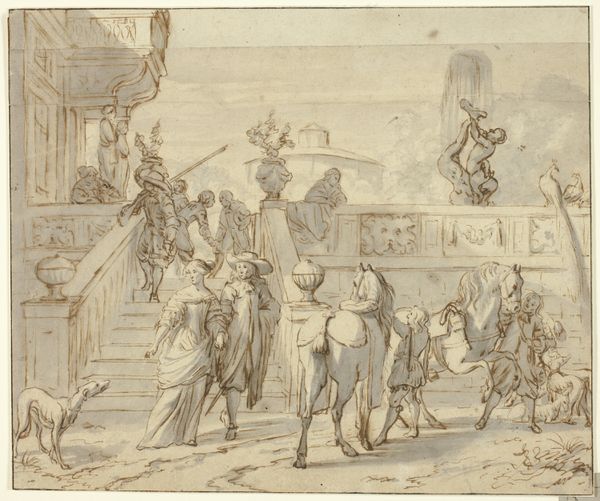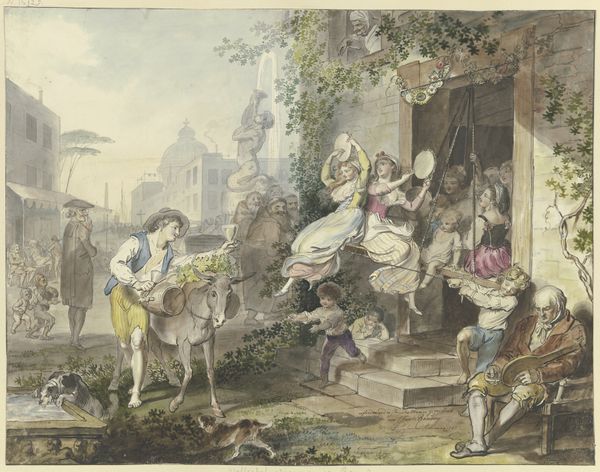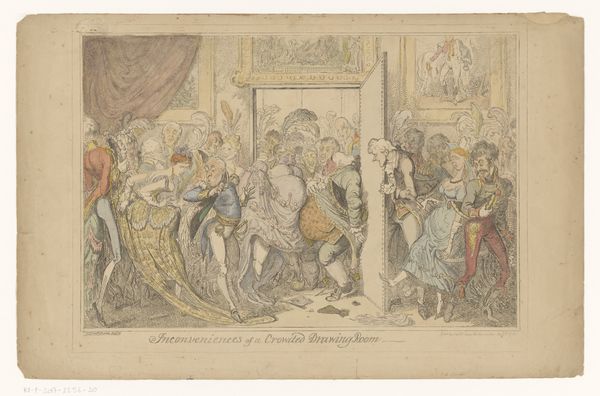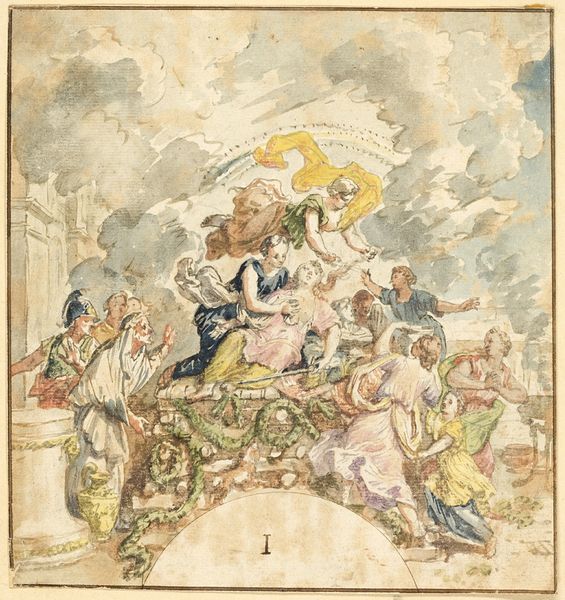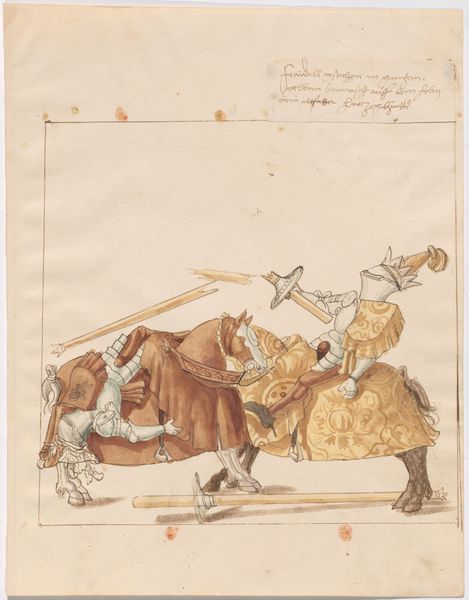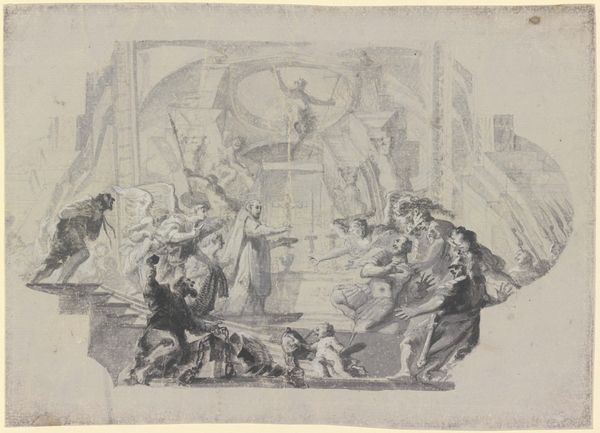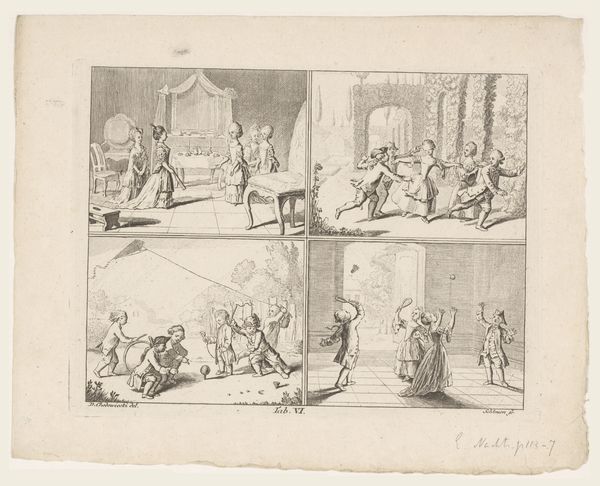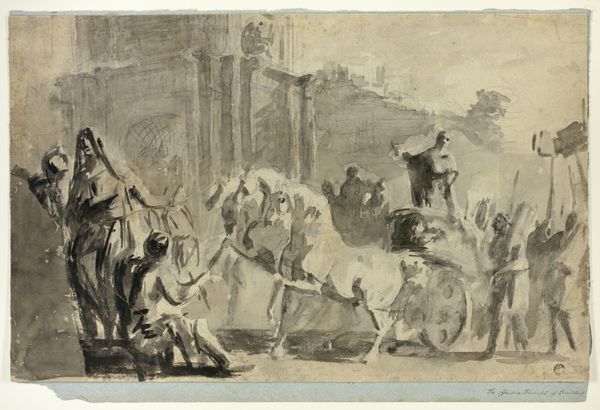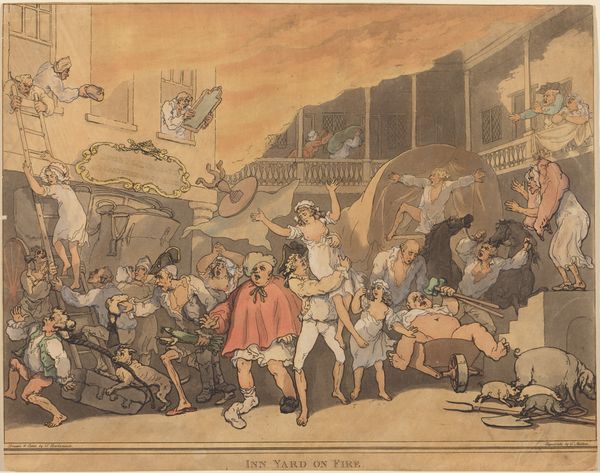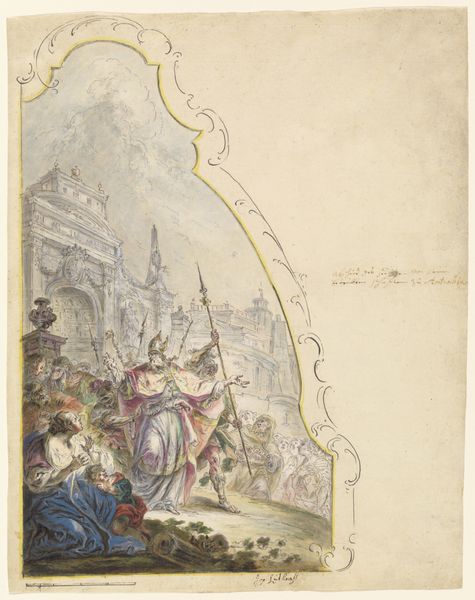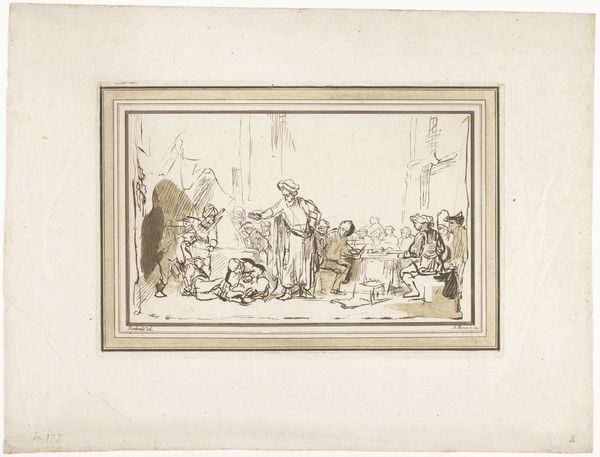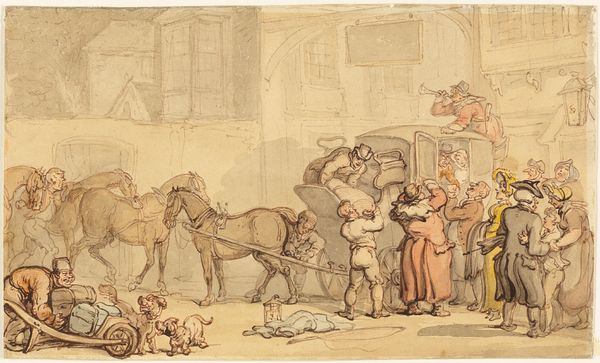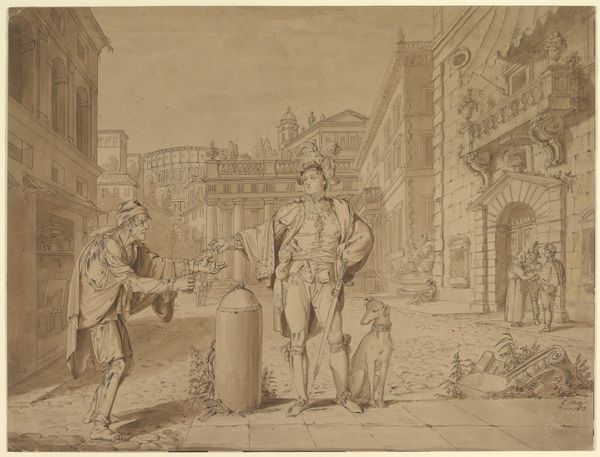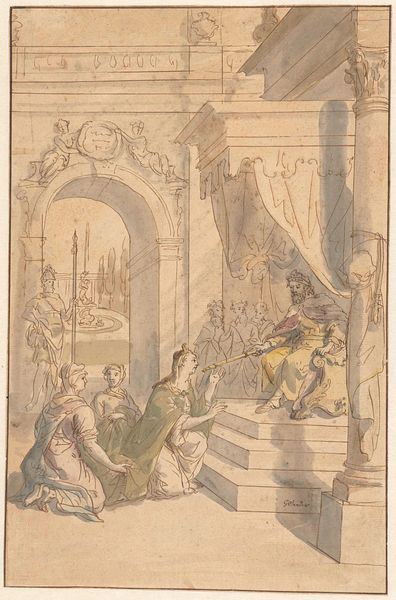
drawing, paper, watercolor
#
drawing
#
water colours
#
caricature
#
landscape
#
paper
#
watercolor
#
romanticism
#
genre-painting
#
watercolor
Dimensions: 6 3/16 x 7 15/16 in. (15.72 x 20.16 cm) (sight)7 1/16 x 9 3/16 in. (17.94 x 23.34 cm) (sheet)15 3/4 x 19 3/4 in. (40.01 x 50.17 cm) (outer frame)
Copyright: Public Domain
Curator: Welcome. Before us is a work titled "Caricatural Carnival Scene in Rome," an early 19th-century watercolor and ink drawing by Antonio Porcelli. It’s currently held in the collection of the Minneapolis Institute of Art. Editor: It’s quite lively, isn’t it? The figures seem caught mid-revelry, a spontaneous snapshot of street theatre and elaborate costume. A little chaotic, maybe? Curator: The materials really lend themselves to that feeling, I think. The loose washes of watercolor give the impression of transience, perfectly capturing a fleeting moment of festivity and the disposable nature of this type of public spectacle. It was produced, presumably, for quick sale, an affordable souvenir of a specific type of spectacle for tourists. Editor: The costumes are certainly symbolic. The exaggerated features and dress point to established commedia dell'arte figures, don't they? Punchinello with his hump, the Doctor with his oversized belly. They are readily understood symbols of certain character traits, amplified for comic effect. Curator: Exactly, and consider how easily and quickly those costumes were assembled. The mass-produced masks, the simple fabrics hastily sewn into recognisable shapes. The focus was less on durability and luxury and more on conveying these symbolic associations. Editor: And it works! They still speak volumes, don’t they? We instantly recognise these figures even centuries later. The jester playing on a rooftop above the throng of bodies connects, for me, to a long history of festive inversion and temporary freedom from societal restraint. This speaks to both transgressive fun and sanctioned societal release. Curator: It is interesting to observe how these recognizable archetypes functioned. Were these costumes fabricated locally by small businesses or did patterns and possibly partially finished garments ship throughout the country? This might indicate an organized commercial network catering to seasonal festivities. Editor: That dome in the background – probably Saint Peter's Basilica – it firmly grounds us in Rome, of course. But isn’t it interesting how its monumental presence feels almost secondary? It’s this temporary world of the Carnival taking center stage, dominating even that imposing symbol of spiritual and political power. Curator: A clear contrast – the eternal grandeur and impermanent spectacle. Makes me wonder about the intended audience. Were these small watercolors more likely purchased by those within Roman society looking to embrace its light-hearted side or Northern European elites enjoying their "Grand Tour"? Editor: It does seem to capture something very particular about that era – the allure of the "picturesque" ruin combined with the vibrant street life that Romantic travelers yearned to experience. Thank you for bringing it to life, emphasizing those aspects of enduring symbolic appeal. Curator: And thank you, for helping to visualize not only the historical context and construction, but also for the ways people interacted with and consumed visual materials in this time.
Comments
No comments
Be the first to comment and join the conversation on the ultimate creative platform.
